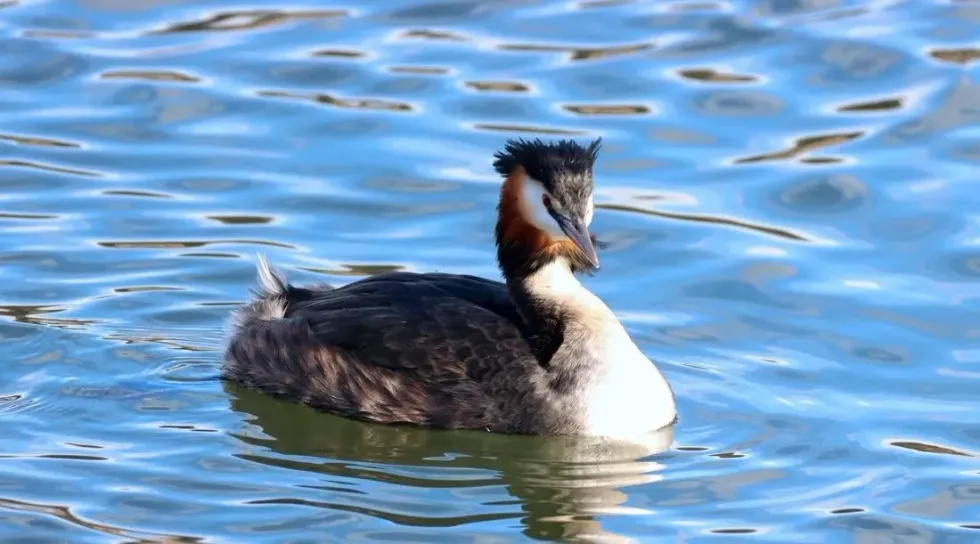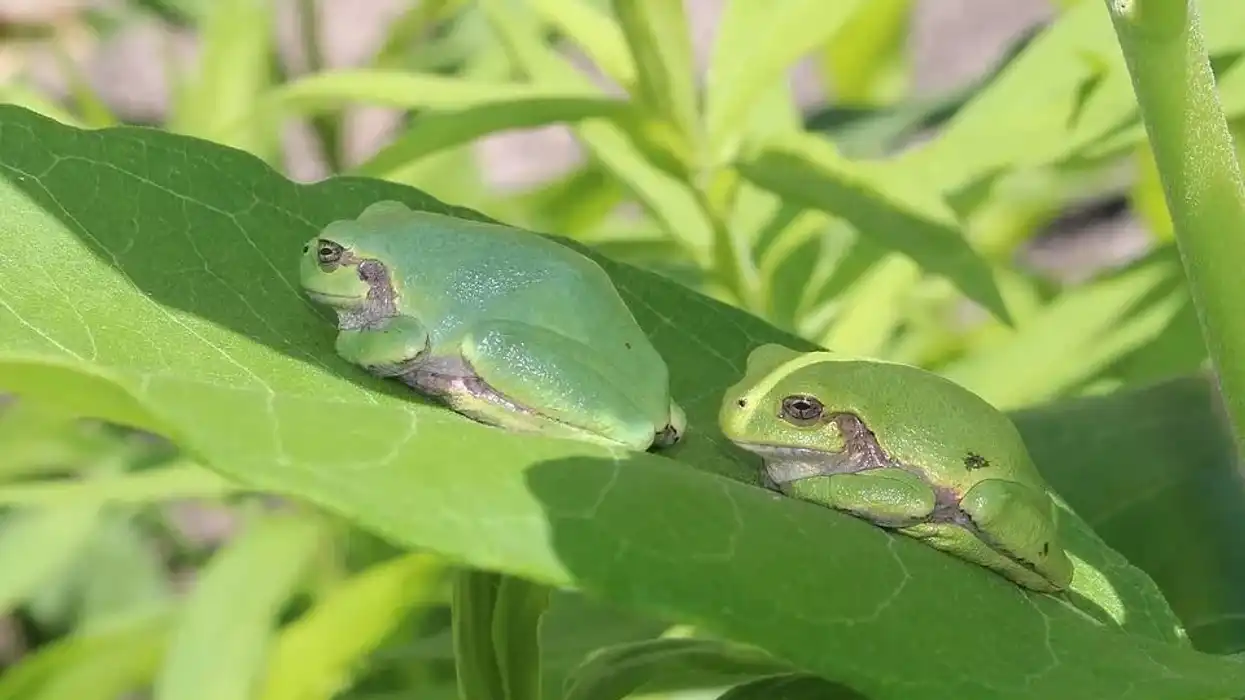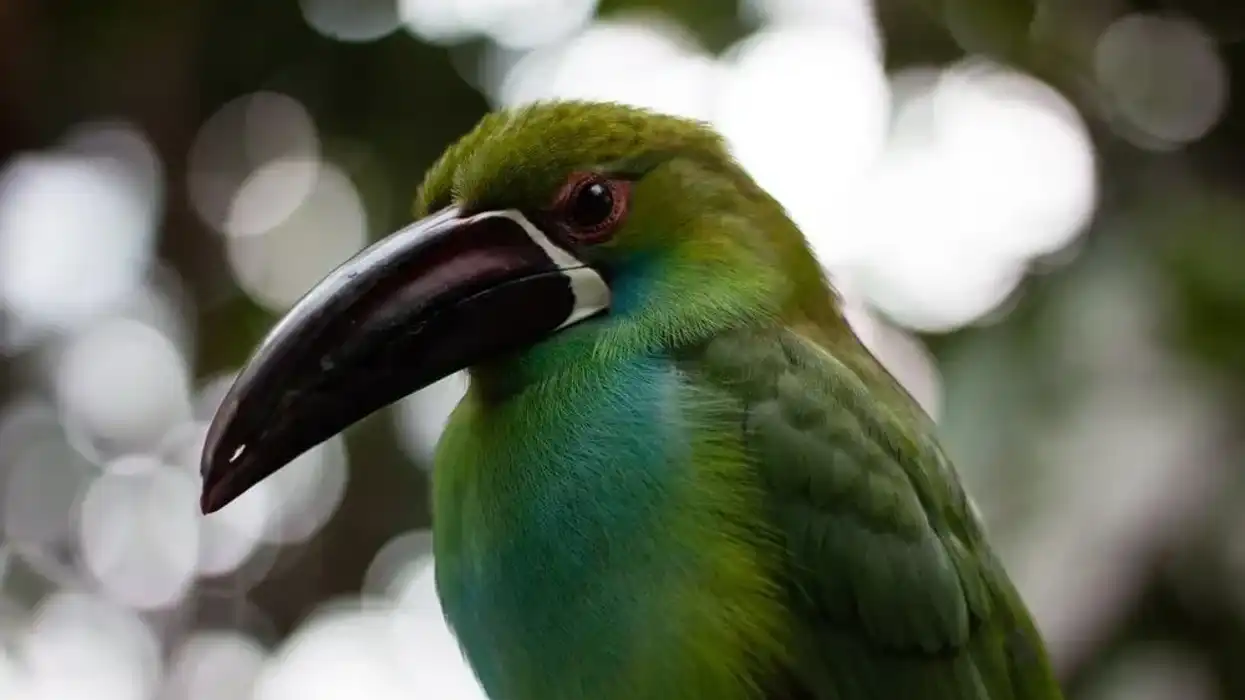Are you ready to know about critically endangered birds of the world? If yes, then hold tight, as we are going to learn about the Junin grebe (Podiceps taczanowskii).
This flightless bird species are endemic to the Lake Junin of Peru, where it resides with the Junin rail.
It belongs to the order Podicipediformes, family Podicipedidae, and genus Podiceps. You can easily spot this species because of its black and white plumage or through one of its calls.
If you are lucky to visit this lake of Peru, you will most likely see the birds swimming in the open water while searching for fish.
The data about its low population has brought this species to the forefront as we are almost on the brink of losing these amazing birds. So, currently, conservation work is going on to encourage the birds into breeding and to produce chicks so that the species has a bright future.
Keep reading to know more interesting Junin grebe facts. Also, check out the articles on common murre and Sarus crane to know about birds.
Junin Grebe Interesting Facts
What type of animal is a Junin grebe?
The Junin grebe (Podiceps taczanowskii) is a species of grebe and is one of the critically endangered birds of the world.
What class of animal does a Junin grebe belong to?
The Junin grebe (Podiceps taczanowskii) belongs to the class Aves, to the family Podicipedidae, and to the genus Podiceps.
How many Junin grebes are there in the world?
It's heartbreaking to note that the population of these birds is estimated to be around 140-320 mature individuals. Trends note that the population of these birds has declined by almost 80% in the past few years, but it has somewhat slowed down.
Where does a Junin grebe live?
The Junin grebe bird is endemic to Lake Junin, present in the highlands of central Peru. This lake is also known as Chinchayqucha in the local language. And, this isn't a migratory bird species, so it remains in the same area throughout the year.
What is a Junin grebe's habitat?
The habitat of this bird is limited to Lake Junin, and during the non-breeding season, you can mostly find it in the open water of the lake, looking for food. This wonderful Peruvian lake has extensive reed marshes near its shore, which often form beautiful mosaics on the surface.
During the breeding season, you can find the birds frequenting the bays and channels found around the lake, where these birds nest.
Who do Junin grebes live with?
Junin grebes can usually be found in small flocks, and as these birds are limited to the lake, you can often find the individuals gathered in the same area. One of the most amazing sights is seeing a large group of these birds swimming and diving in the same area.
How long does a Junin grebe live?
We don't know the exact lifespan of these birds, but other species from the same genus usually have an age range of up to 14 years.
How do they reproduce?
The breeding season for the Junín species is during the local monsoon season that lasts in the months of November to March. As the season begins, the birds tend to move towards the marshes for roosting as well as to build nests.
These birds breed in colonies of up to 20 pairs, and the usual distance between the nests is 65 ft (20 m).
Around one to three Junin grebe eggs are produced by the female birds, and the young chicks are usually born covered in a gray down with faint stripes. When the water level of the lake is low, the birds may refrain from raising any chicks.
What is their conservation status?
Based on current data, BirdLife International has assigned the status of Critically Endangered to the Junín species. On the other hand, it's classified under the status of Endangered in the International Union for Conservation of Nature (IUCN) Red List.
Pollution caused by mining has been deemed to be one of the key reasons for making the Junin grebe endangered.
However, other reasons like the building of dams are also cited as reasons. Protection and conservation have been able to bring down the drastic rate of decline, but fluctuations still exist in the population distribution.
Junin Grebe Fun Facts
What do Junin grebes look like?
During the non-breeding season, the Junin grebe (Podiceps taczanowskii) has a dull appearance. But, as the breeding plumage starts to appear, you can really see the beauty of this bird.
It makes the black and white feathers of this bird more distinct, and you can really see the black feathers around its head, which form a crown.
On the bird's head, you can also spot the elongated feathers near the ear-coverts that are mixed with the dainty silvery plumes that hang till the bird's neck. The upper wing is mostly covered in black and gray feathers, while the underparts are predominantly white.
This species has a skinny neck along with a long gray bill.
When you see the legs of this bird, it may seem gray, but on a closer look, a distinct greenish tinge is seen. The male and female Junin grebe's appearances are similar, but the female birds can be a tad smaller.
 *We've been unable to source an image of Junin grebe and have used an image of crested grebe instead. If you are able to provide us with a royalty-free image of Junin grebe, we would be happy to credit you. Please contact us at hello@kidadl.com.
*We've been unable to source an image of Junin grebe and have used an image of crested grebe instead. If you are able to provide us with a royalty-free image of Junin grebe, we would be happy to credit you. Please contact us at hello@kidadl.com.
How cute are they?
Junin grebe birds are extremely cute, and their level of adorableness is as high as the eared grebe.
How do they communicate?
The main form of communication of this species is through its calls. And, the most common Junin grebe song made by this species is the 'phuuuee' sound which is known as advertising calls. Other than that, the loud 'dzi-dzee' calls are also made in a display. Another of its common calls is the 'doo'ith-wit' sound.
How big is a Junin Grebe?
According to the data we have found, junín grebe birds grow to a size of around 13-15 in (33–38 cm). Compared to it, the western grebe has a size of around 21.6-29.5 in (55-75 cm), making the Junin a small species.
How fast can a Junin Grebe fly?
One of the most unique things about the Junín grebe is that it is one of the flightless birds of the world. So, we cannot possibly provide you with data about the flying of these birds.
How much does a Junin grebe weigh?
We don't have any data regarding the weight range of Junin grebe (Podiceps taczanowskii) birds.
What are the male and female names of the species?
There are no separate name for the Junin grebe male and the Junin grebe female.
What would you call a baby Junin grebe?
A Junin grebe baby is called a chick.
What do they eat?
This black and white bird is adept at fishing, and up to 90% of its diet mainly contains small fish like the pupfish. Other than that, this bird also eats species like the chironomid midges, corixid bugs, as well as amphipods.
The bird will most likely depend on bugs during the winter months when fish isn't available. You can find these birds swimming in the open water, looking for food. And, during the breeding season, it tends to dwell along the shore.
But, during the winter, it's more likely to spot this bird in the center of Lake Junín. This bird mainly uses the technique of diving into the open water to search for food.
Are they dangerous?
No, these birds aren't dangerous. Also, we are yet to know a lot about this bird species.
Would they make a good pet?
As the Junin (flightless) grebe is a threatened species, it's restricted to keep the bird as a pet as it's under wildlife protection. Moreover, this bird would seldom be able to survive outside of this endemic lake habitat.
Did you know...
When it comes to the ecosystem role of the Junin grebes, it takes care of feeding the small fish and invertebrates of Lake Jupin to maintain the local food cycle. With improper distribution and reduced population, the other species can take over the lake, creating a high imbalance in the food chain.
A similar fate has also befallen the Junin rail that shares the habitat with the grebes.
Are Junin grebes endangered?
Yes, the Junin grebe is an endangered bird species, and its population is thought to be around 140-320 individuals.
How did Junin grebes get their name?
The Junin grebe birds get the name for being found only in Lake Junín, present in central Peru. Also, it's the scientific name Podiceps taczanowskii is a dedication to Władysław Taczanowski, a Polish zoologist who wrote a book called 'Ornithology of Peru'.
Here at Kidadl, we have carefully created lots of interesting family-friendly animal facts for everyone to discover! For more relatable content, check out these radjah shelduck facts and Andean flamingo facts for kids.
You can even occupy yourself at home by coloring in one of our free printable bird coloring pages.
*We've been unable to source an image of Junin grebe and have used an image of great crested grebe instead. If you are able to provide us with a royalty-free image of Junin grebe, we would be happy to credit you. Please contact us at hello@kidadl.com.




 *We've been unable to source an image of Junin grebe and have used an image of crested grebe instead. If you are able to provide us with a royalty-free image of Junin grebe, we would be happy to credit you. Please contact us at hello@kidadl.com.
*We've been unable to source an image of Junin grebe and have used an image of crested grebe instead. If you are able to provide us with a royalty-free image of Junin grebe, we would be happy to credit you. Please contact us at hello@kidadl.com.



